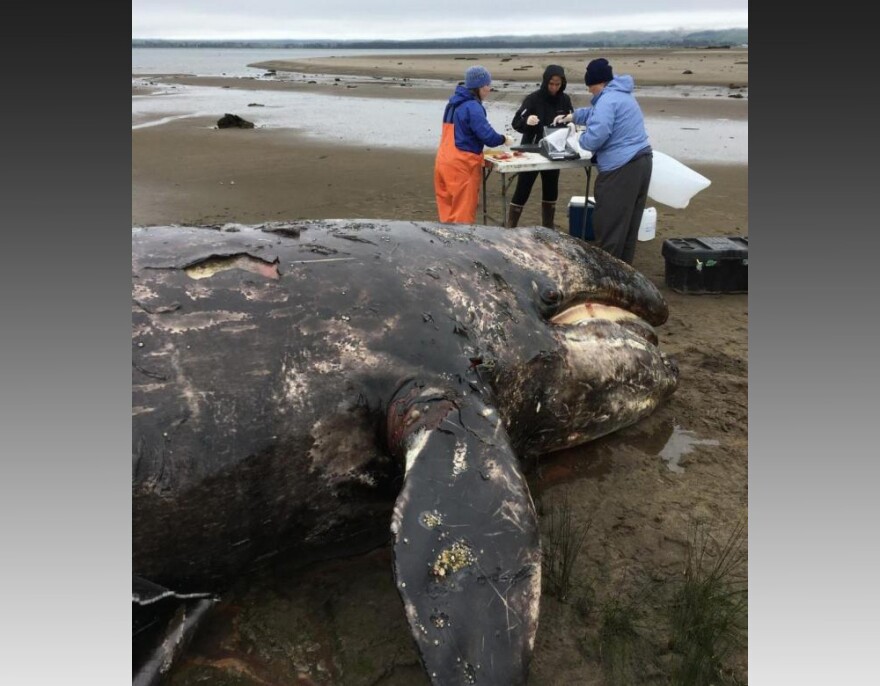Earlier this year, a gray whale calf died after getting tangled in crab pot lines near Seaview, Washington. Now commercial and tribal crab fishermen from the Washington coast have agreed to form a working group to discuss how to reduce the risk of a repeat.
Fleets in Oregon and California have previously formed similar work groups.
Whale numbers along the West Coast are rebounding, but so are sightings of humpback whales, gray whales and the odd blue whale entangled in fishing lines and buoys. The great majority of these cases are off California and they most commonly involve Dungeness crab gear.
Grays Harbor-based crabber Larry Thevik said the Pacific Northwest is fortunate that few whales get tangled here. The fleet wants to keep it that way.
"I'm hoping that we might be able to identify changes that we might make that would reduce the potential risk of entanglement," said Thevik, who serves as vice president of the Washington Dungeness Crab Fishermen's Association.
"Any time you entangle a whale and there is a mortality, I mean that's a problem," Thevik said. "It's certainly a bigger problem in California."
The newly-formed Washington whale entanglement work group, like its counterpart in Oregon, could look at experimental gear modifications, fishing season changes or area closures.
None of the fishing industry working groups on the West Coast has regulatory authority. They can make recommendations to a state regulator in some cases or encourage voluntary compliance with "best practices" within the fleet.
The decision to launch Washington's whale work group was taken at a meeting in Montesano Wednesday convened by the Pacific States Marine Fisheries Commission, which got a grant from NOAA Fisheries.
A whale researcher in attendance and several of the crabbers agreed that reducing the number of lines in the water during the peak whale season would be the simplest way to address the issue.
In the Pacific Northwest, the greatest numbers of threatened or endangered whale species appear in local waters in late spring and summer. That conveniently coincides with the tail end of the commercial crab season.
Blue whales and humpback whales are listed as endangered or threatened along the U.S. West Coast. The gray whale population has rebounded such that it was removed from the threatened list in 1994.


